Creating new opportunities for students to learn about lakes, wetlands, rivers and watersheds
by BENJAMIN HAYES
by BENJAMIN HAYES
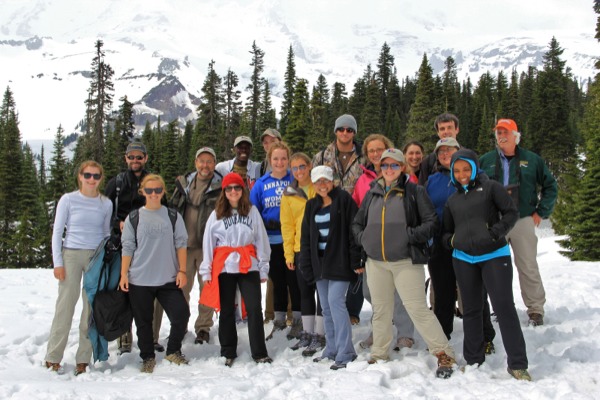
Bucknell-on-the-Susquehanna (ENST 291) students hiking the snow-covered slopes of Mount Rainier, WA, to learn about the hydrology of forested headwaters of the Puget Sound region. The students compared this experience to one at the beginning of the course where they had hiked the forest headwater regions of the Susquehanna River (Ricketts Glen State Park) and the Chesapeake Bay.
From the beginning of his science and environmentally-related courses, Bucknell faculty in biology, geology, and environmental sciences have been taking students on field trips to surrounding locales.
Watershed-based experiential learning
Susquehanna River Initiative faculty and staff are adapting their courses to local watershed and developing new field-based, lab and classroom experiences.
Guest lectures, seminars, and teaching workshops augment the classroom learning and enable people from off-campus to interact with faculty and students.
Interdisciplinary teaching is another core component of the Susquehanna River Initiative. Over the past four years, it has attracted over two hundred students in civil engineering, geology, and biology, as well as the humanities, and connected their research and learning to the river.
Course development grants bring faculty from across disciplines together to create new interdisciplinary courses or enhance older watershed-related courses to engage students in relevant topics that use the Susquehanna watershed as a great teaching laboratory.
From hellbenders, to shad migration, designing turbines and tidal generators, to trout habitat improvement and stream restoration, students are more engaged by learning in a out-in-the-field and on-the-river setting. New courses include: Natural History of the Susquehanna River, Watershed Systems Science, Stream Restoration, Sedimentation Engineering, River Mechanics, and the 444-mile classroom of the Bucknell-On-The-Susquehanna (BotS).
Once a new course is being taught, the SRI director and staff work closely with the professor and students to assist them with on-the-river labs, classroom lectures, watershed data and maps, and occasional kayak trips.
Course development grants bring faculty from across disciplines together to create new interdisciplinary courses or enhance older watershed-related courses to engage students in relevant topics that use the Susquehanna watershed as a great teaching laboratory.
From hellbenders, to shad migration, designing turbines and tidal generators, to trout habitat improvement and stream restoration, students are more engaged by learning in a out-in-the-field and on-the-river setting. New courses include: Natural History of the Susquehanna River, Watershed Systems Science, Stream Restoration, Sedimentation Engineering, River Mechanics, and the 444-mile classroom of the Bucknell-On-The-Susquehanna (BotS).
Once a new course is being taught, the SRI director and staff work closely with the professor and students to assist them with on-the-river labs, classroom lectures, watershed data and maps, and occasional kayak trips.
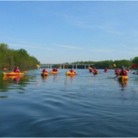
ENST 298
Bucknell on the Susquehanna
Bucknell on the Susquehanna
A three-week sojourn across Susquehanna watershed, from its headwaters to the Chesapeake Bay, exploring the natural history, historical and cultural aspects of the region.
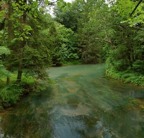
GEOL 324
Hydrogeology
Hydrogeology
Water properties, fundamental flow equations, surface and subsurface flow, well hydraulics, regional flow, and contamination.
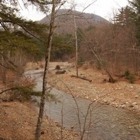
GEOL 299 / ENST 299
Watershed systems
Watershed systems
Scientific principles to integrate physical and biological approaches to stream restoration in watershed management. Team-taught field course highlights developing restoration plan for Bucknell's Miller Run.
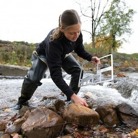
GEOL 298 / ENST 298
Stream restoration
Stream restoration
Scientific principles to integrate physical and biological approaches to stream restoration in watershed management. Team-taught field course highlights developing restoration plan for Bucknell's Miller Run.
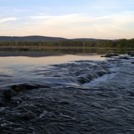
CENG 421
Hydrology
Hydrology
The interrelation of meteorological conditions, precipitation, surface runoff, and groundwater storage.
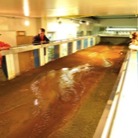
CENG 421
River mechanics
River mechanics
Mechanics of free-surface flows in rivers; introduction to sediment transport mechanisms; application to river engineering design (bridge crossings, culverts, flood control, river stabilization).
additional courses
Limnology
BIO 334
BIO 334
The physical, chemical, and biological characteristics of freshwater communities
Ecosystem Ecology
BIO 353
BIO 353
Interactions between organisms and physical and chemical environment including nutrient cycling and energy flow, global biogeochemistry, temporal and spatial dynamics of ecosystems.
Aqueous Geochemistry
GEOL 205
GEOL 205
Element distribution, basic thermodynamics and kinetics, mineral and gas solubility, phase diagrams, stable and radioactive isotopes, oxidation-reduction processes, surface geochemistry, composition of natural waters.
Hydrogeology
GEOL 324
GEOL 324
Water properties, fundamental flow equations, surface and subsurface flow, well hydraulics, regional flow, and contamination.
Applied Environmental Geomorphology
GEOL 310
GEOL 310
Surviving on a complex and dynamic earth surface. Understanding environmental problems and geologic hazards with geologic principles set in a multidisciplinary framework.
Water Resources Engineering
CENG 320
CENG 320
Planning, design, and operation of water resources projects with emphasis on hydrology, hydraulic structures, and open and closed conduits; applications in stormwater management and water supply.
Sedimentation Engineering
CENG 429
CENG 429
Mechanics of sediment entrainment, transport, and deposition; fluvial hydraulics and bed forms; scour and deposition around bridge piers and in reservoirs; numerical computations in modeling sediment flux through river channels.
